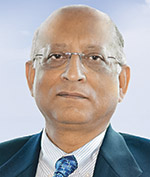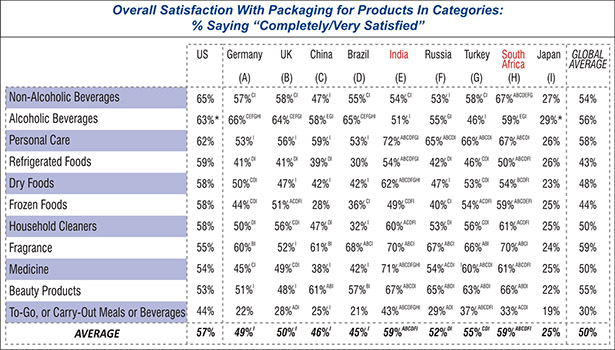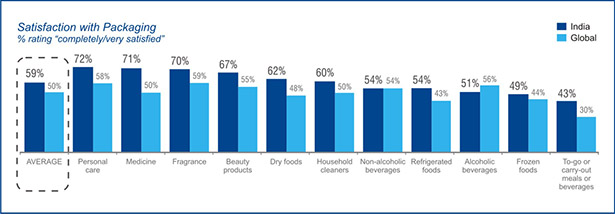MeadWestvaco Corporation (MWV), a global leader in packaging and packaging solutions, launched Packaging Matters™, the company’s second annual study on the role packaging plays in consumer purchasing behavior, brand loyalty and overall product satisfaction. This year, the research has expanded to 10 markets, including Brazil, China, Germany, India, Japan, Russia, South Africa, Turkey, the United Kingdom and the United States, to provide a broader perspective on the role of packaging around the world. Below are the extracts of the interaction Paper Mart team had with Mr. Gautam Sircar, Managing Director, MeadWestvaco India Pvt Ltd discussing the outline and the findings of the report?
Paper Mart (PM): What is Packaging Matters and what is the idea behind it?
Gautam Sircar (GS): Packaging Matters™ is MWV’s annual study, which is conducted to understand the role of packaging in consumer purchasing behavior, brand loyalty and overall product satisfaction. This study gauges the factors that lead to product satisfaction. Using Packaging Matters™ data, brands can better understand consumers’ relationship with packaging, leading to improvements that will increase product satisfaction and help drive trial and repeat purchase.
The objectives of the same are as follows:
- To analyse the factors leading to overall satisfaction with packaging of products
- To study the impact of product packaging on consumers shopping behavior- for products sold online and in-store
- To ascertain the key drivers which drive trial and repeat purchase
The idea behind Packaging Matters™ is to further ascertain how packaging impacts shopping behavior, influences product satisfaction and motivates consumers around the world. This is the second year the study was conducted and the first year which examined ten global markets, including Brazil, China, Germany, India, Japan, Russia, South Africa, Turkey, the United Kingdom and the United States.
PM: How different is the impact of packaging on Indian consumers from the impact of packaging on American, European and Chinese consumers? What insights does this comparison yield?
GS: A startling observation that came across was that most Indians gave high importance 71 percent to the packaging of the product as compared to a global consumer 41 percent. Other attributes such as quality of product, price of the product, amount of the product contained, variety of products available, etc. all play a very important role in purchase decision and are much more valued by an Indian consumer and are taken into consideration before making the purchase decision vis-a-vis a global consumer. Consumers in India expressed the highest satisfaction with packaging across product categories compared to a global consumer.
We are well supported by the Czech Export Bank. We are, therefore, in a good position to finance projects in India.
Consumers in India and South Africa express the highest satisfaction in most product categories, and consumers in Japan express the least satisfaction. Another noteworthy pattern that emerged is that satisfaction with packaging for to-go meals and beverages is consistently low across all countries. Indian consumers are most satisfied with the packaging of the personal care products and medicines.
PM: Satisfaction with packaging in the personal care segment is 72 percent, which is the highest packaging satisfaction across categories, and satisfaction with packaging in the “to-go or carry-out meals or beverage” segment is 43 percent, which is the lowest packaging satisfaction across categories. Why is it so?
GS: Across all categories studied, we found that functionality was the area that consumers identified as key to their satisfaction. To-go or carry-out meals and beverages is consistently ranked as the category in which global consumers are least satisfied, 30 percent globally; Indian consumers are only slightly more satisfied than the global average 43 percent. The key gaps in satisfaction in this category are related to attributes like protecting the product from spilling. On the other end of the spectrum, personal care products is among the categories in which global consumers report the highest levels of satisfaction 58 percent. Indian consumers are again more satisfied than the global average 72 percent. Functionality plays an important role in this category, too. Consumers want personal care products that allow them to get the entire product out of the packaging.
PM: Does the impact of packaging differ according to age group? On which age group does packaging have the greatest impact and why?
GS: Packaging is the one marketing communications channel that every consumer interacts with, making it critical touch point for every brand. Brands have lots of options when considering packaging for their products, but our research has found that the most important attributes that consumers want are functional – for instance, packaging that is easy to open and re-seal, protects the product from breaking or spilling and allows the consumer to get the entire product out of the package.
PM: What are your views on the Indian packaging market, its challenges and opportunities?
GS: The Indian packaging industry is currently $18.8 billion with an annual growth rate above 12.36 percent, which more than twice the global average. It is the sixth biggest packaging market in the world. India’s Rs 65,000 crore packaging industry is expected to grow at 18-20 percent to reach Rs 82,500 crore by 2016. The sales turnover of the Indian packaging industry is expected to reach $ 43.7 billion by 2016. India’s per capita consumption of packaging is only 4.3 kg per person per annum, as against Germany’s 42 kg and China’s 20 kg, which is very low compared to global standards. We see tremendous opportunity around packaging for Indian consumers
The challenges associated with Indian packaging include:
- Regulatory issues in packaging- such as government regulations and policies (with respect to quality, safety, brand protection and combating counterfeit in the domestic and export markets)
- Changing market dynamics and the changing role of packaging
- Impact of new food safety laws on packaging
- Aligning consumer preferences- change in consumer taste, preference, habits
- Changing labour laws in the country
PM: “Right packaging is critical in the purchasing journey”. Kindly elaborate?
GS: The right packaging is critical in the purchasing journey. Our research shows that packaging is more than twice as important to overall product satisfaction in developing packaging markets like India, as compared to more developed markets (54 percent vs 20 percent), and packaging plays a major role in product satisfaction to an Indian consumer. Packaging also has a significant impact on in-store shopping behavior in developing markets: more in developing packaging markets like India. Most consumers have tried something new because packaging has caught the eye of the consumer (68 percent) and have also changed brands from the product they’ve purchased in past because of new packaging (44 percent), unlike global consumers that give packaging the least preference when purchasing a product.







